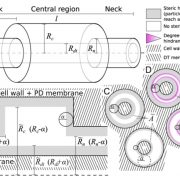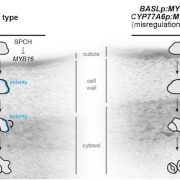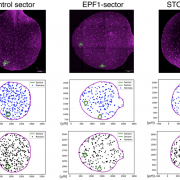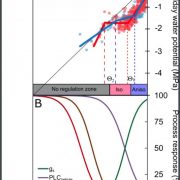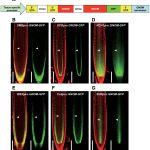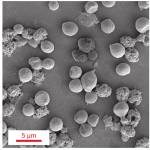Grasses exploit geometry for improved guard cell dynamics
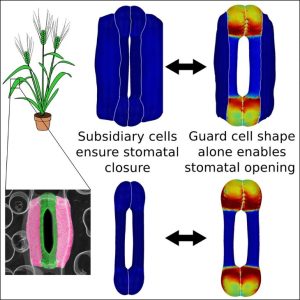 Stomata are pores on the surface of leaves essential for gas exchange. In grasses, stomatal aperture is controlled by pairs of dumbbell shaped guard cells, with each guard cell surrounded by a subsidiary cell. Despite cell geometry being well described, it was unclear how it influences stomata function. Here, Durney et al. used confocal imaging to visualize stomatal opening and stomatal closure in barley leaves. Using these data they derived a finite element model for barley stomata. They show that when subsidiary cell pressure was set to a constant value, no matter whether high or low, the stomata still functioned. However, removing subsidiary cells from the model prevented complete stomatal closure, showing the importance of subsidiary cells in this process. They experimentally tested this by imaging stomata from the Brachypodium distachyon bdmute mutant, which lacks subsidiary cells, and deriving additional mathematical models. The authors also used the mathematical models to investigate cell wall anisotropy in barley guard cells. When anisotropy was set at an orthogonal angle or removed completely, the stomata had normal pressure-aperture response curves, suggesting that guard cell anisotropy is not important for stomatal function. Therefore, this study dissects the role of cell geometry in grass stomatal function and emphasizes the power of combining computational and wet lab techniques. (Summary by Rose McNelly @Rose_McN) Curr. Biol. 10.1016/j.cub.2023.05.051
Stomata are pores on the surface of leaves essential for gas exchange. In grasses, stomatal aperture is controlled by pairs of dumbbell shaped guard cells, with each guard cell surrounded by a subsidiary cell. Despite cell geometry being well described, it was unclear how it influences stomata function. Here, Durney et al. used confocal imaging to visualize stomatal opening and stomatal closure in barley leaves. Using these data they derived a finite element model for barley stomata. They show that when subsidiary cell pressure was set to a constant value, no matter whether high or low, the stomata still functioned. However, removing subsidiary cells from the model prevented complete stomatal closure, showing the importance of subsidiary cells in this process. They experimentally tested this by imaging stomata from the Brachypodium distachyon bdmute mutant, which lacks subsidiary cells, and deriving additional mathematical models. The authors also used the mathematical models to investigate cell wall anisotropy in barley guard cells. When anisotropy was set at an orthogonal angle or removed completely, the stomata had normal pressure-aperture response curves, suggesting that guard cell anisotropy is not important for stomatal function. Therefore, this study dissects the role of cell geometry in grass stomatal function and emphasizes the power of combining computational and wet lab techniques. (Summary by Rose McNelly @Rose_McN) Curr. Biol. 10.1016/j.cub.2023.05.051


